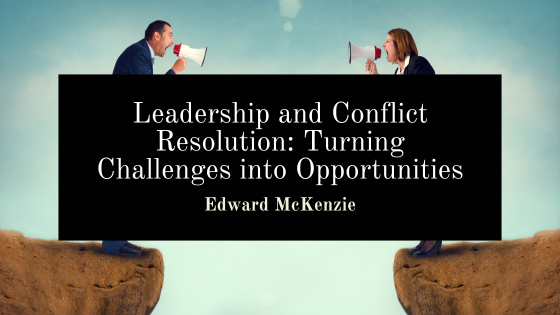Leadership is not just about guiding a team through smooth waters; it’s about steering the ship even when the waves get choppy. In any organization, conflict is inevitable. It can arise from differences in opinions, values, or even personalities. However, how leaders handle these conflicts can make all the difference between stagnation and growth. A skilled leader can turn conflicts into opportunities for innovation, growth, and team cohesion.
Understanding Conflict
Conflict, in its essence, is not necessarily a bad thing. It often arises when people have differing viewpoints, and this diversity can be a source of innovation and creativity. However, when conflicts are left unaddressed or mishandled, they can fester, leading to a toxic work environment. Effective leaders recognize the value of addressing conflicts early and constructively.
Effective Communication
The foundation of resolving conflicts lies in effective communication. A good leader fosters an environment where team members feel comfortable with expressing any concerns and ideas. By actively listening to all parties involved, leaders can gain a better understanding of the root causes of the conflict. This sets the stage for resolution.
Mediation and Compromise
Leaders often play the role of mediator, helping parties involved in the conflict find common ground. They can guide the discussion, highlighting the shared goals and values that unite team members. Encouraging compromise, where both parties give a little to find a solution, is often the key to conflict resolution. This not only solves the immediate problem but also helps build trust and cooperation among team members.
Turning Challenges into Opportunities
Conflict can be an opportunity for growth and positive change when handled correctly. Here’s how:
- Innovation: Conflicts can reveal new perspectives and ideas that were previously hidden. By addressing conflicts openly, leaders can harness this creative energy to find innovative solutions to problems.
- Learning and Improvement: Conflicts often highlight areas that need improvement in a team or organization. Leaders can use these insights to make necessary changes and drive continuous improvement.
- Team Building: Successfully resolving conflicts can lead to stronger bonds within the team. Team members who see their leaders effectively navigate conflicts are more likely to trust and respect their leadership.
- Resilience: When conflicts are handled constructively, they can make the team more resilient in the face of future challenges. Team members learn valuable skills in communication, negotiation, and conflict resolution that they can apply in the future.
- Increased Productivity: A conflict-free environment doesn’t necessarily mean a productive one. Sometimes, a healthy level of conflict can drive motivation and productivity. Leaders can use conflict resolution to strike the right balance.
Case in Point: Apple Inc.
Apple Inc. is a prime example of a company that has turned conflicts into opportunities. The clash between Steve Jobs and John Sculley in the 1980s led to Jobs leaving Apple. However, it also prompted innovation and a new approach to product development. Years later, Jobs returned to Apple, and his experience outside the company had fundamentally changed his perspective. This conflict ultimately led to the development of iconic products like the iPhone and iPad.
Leadership and conflict resolution go hand in hand. Effective leaders embrace conflicts as opportunities for growth and change, fostering a culture of open communication and constructive conflict resolution. By doing so, they not only diffuse tensions but also turn challenges into opportunities for innovation, learning, and improved team dynamics. Conflict, when managed correctly, can be a stepping stone to success.
